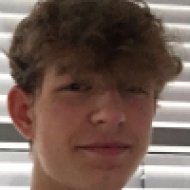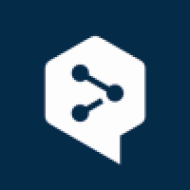In my second blog post on the virtual art exhibition I wrote about the two big tasks that kept us busy for a long time: a) creating the presentation and meeting spaces as WorkAdventure tilesets in Tiled and b) creating the website with the blogger software Ghost.
So far, however, I have not addressed our internal communication, which is what makes proper teamwork possible in the first place - especially since not everyone is always working in the same place at the same time.
Collaborative work
At GzEvD we have various channels and platforms for remote work - apart from telephone and mailing. So that Friedel could share the relevant ones, we created him as a user and gave him access rights to several tools of our operational infrastructure with a single account. Of course, they are all open source :)
With RocketChat, we have an instant messenger through which we can exchange posts, links and files immediately "in real time" and with a high standard of data protection.
For project management, we used a repository under GitHub, a distributed version management software. There we posted, prioritised and tracked tasks and problems as so-called issues.
But often it was also important to communicate directly across distance and demonstrate screen views, work steps or device settings to each other. For this, we met regularly in video meetings using BigBlueButton (under the front-end interface from GreenLight).
Friedel's onboarding was completed by logging into our self-hosted Nextcloud, where we gave him access rights to specific areas to securely store and retrieve material.
Art on the map
After the Exponuevo maps for the entrance, foyer and hall had been roughly drawn and programmed, it was finally time to prepare the actual exhibits for the digital showroom.
For this, Friedel had to upload his pictures, films and photos into the filing system Surfer. As soon as he defined an area on the exhibition map and assigned a property to it, into which he copied the file path, the corresponding graphic was opened and shown when "entering" this location - as if the viewer were now standing in front of it. Unfortunately, the output was not consistent and also not very visually appealing, so Friedel tried to create HTML files where he included visuals using inline CSS. This worked and gave better results, but the method was far too time-consuming, so we looked for an alternative. We found it in the CMS Drupal.
In this framework, I configured a special theme so that the objects could now be entered in a structured way. The focus was on categories such as the allocation to certain series. In addition, each item was to receive a description or comment as well as information about its saleability. With more than 100 pieces, this was a very time-consuming, laborious task in which we could unfortunately hardly support the artist, since only he knows his works well enough.
Finally, that was also done.
But before every premiere there has to be at least a dress rehearsal.
A pilot test shortly before
So a few days before the event, we did a real test to which we invited not only the team members but also test persons. At the beginning it was rather chaotic and not entirely smooth, but in the end everything we had thought and imagined worked out! We were satisfied and - what was even more important - Friedel was happy. The point of this run-through was to find out where the mistakes and weak points were and to find out where we could make improvements.
For me, the evening was a jump into cold water in another respect. Because my job was to navigate "lost" visitors back to the right places or to sort out their technical difficulties. I had to get used to this support role. But after my baptism of fire, I felt prepared.
Would you like to know more about our technology stack? You want to set up a similar project and need IT support? Get in touch at kontakt@gzevd.de!
On the Exponuevo.de homepage you can get more insights into the process and see for yourself!







